Trading Card Games (TCGs) are undoubtedly one of the most popular genres of gaming, in both physical and digital formats. This was especially true during the pandemic when most of us sat at home wondering how to pass time. eBay's 2021 "State of Trading Cards” Report revealed that the e-commerce platform saw a 142% growth in its trading card category, recording a sale of 4 million more cards in 2020 when compared to 2019.
I don’t know about you, but I grew up on anime and online TCGs. I spent countless hours grinding in Yugioh Duel Links and Hearthstone. And when I got into crypto and blockchain gaming, a couple of the very first games I discovered were Splinterlands and Gods Unchained.
With blockchain gaming getting more attention each day, I decided now would be the best time to write a piece on Splinterlands, one of the most popular TCG games that’s successfully survived more than four years in the crypto gaming industry. Bear or Bull Market, this game has managed to hold on.
In this article, I try to give you a good idea of what the game is, how to get started, and whether you can make a profitable side hustle from playing competitively. So, without further ado, let us get down to the details.
What is Splinterlands
Splinterlands is a multiplayer digital-collectible trading card game on the Hive blockchain. The game is a strategic auto-battler, where players must put together the most optimal 7-card deck to fight against their opponents in each round.
Each round will begin with its own set of rules upon which the player must create their deck. It’s reminiscent of games such as Hearthstone, Legends of Runeterra, Yu-Gi-Oh and Magic the Gathering Arena.

Cards in Splinterlands are player-owned non-fungible tokens. Players can use their NFTs to battle for prizes, collect them as collectibles, trade them on the peer-to-peer market, combine them to level up, or even burn them to get Dark Energy Crystals, Splinterlands' official in-game cryptocurrency.
Splinterlands follows a play-to-earn model with players winning rewards in the ‘Ranked mode’ by competing against each other in a league-based system. To progress up the league, players must secure wins and earn rank points. The higher the league, the better rewards players can earn through winning matches.
Splinterlands is free-to-try but not free-to-play. Players cannot earn rewards or buy card packs to competitively climb ranks without purchasing the ‘Summoner’s Spellbook’ (more on that later). However, the game does allow players to play a few matches and try it for free before deciding to invest in the game.
History and the Splinterlands Team
The game was originally launched on the Steem blockchain as ‘Steem Monsters’ in May 2018 before rebranding to ‘Splinterlands’ in April 2019. Splinterlands officially migrated to the Hive blockchain after it forked from Steem in 2020.
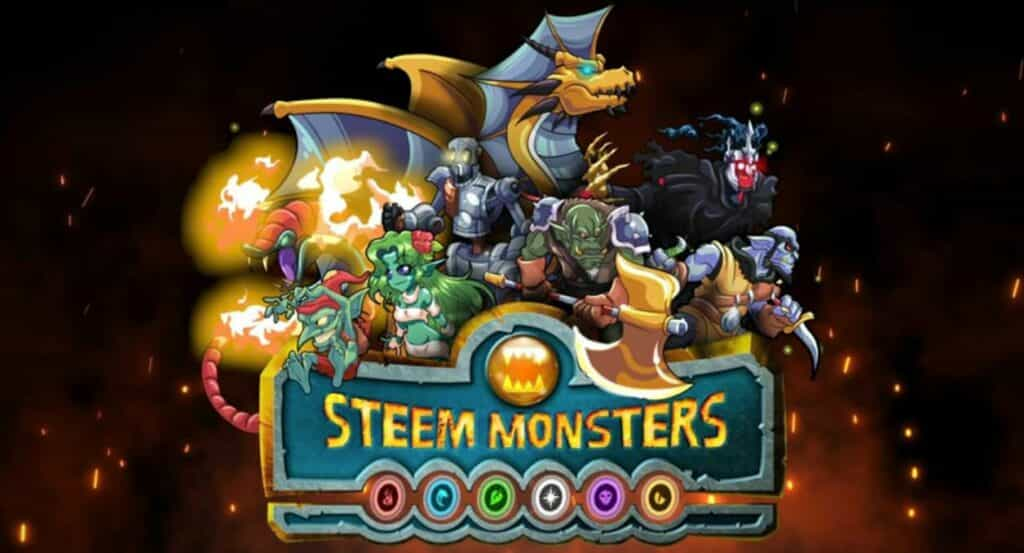
Splinterlands was developed by Dr. Jesse “Aggroed” Reich and Matthew “Yabapmatt” Rosen, who took inspiration from popular card games such as Magic the Gathering and Hearthstone.
The two met in 2018 and were working together to build a marketing platform when they learned they had a common interest in gaming. When Matthew suggested that they start a trading card game, Dr. Reich revealed that he had one almost ready to go. This was the beginning of the game which would be known today as Splinterlands.
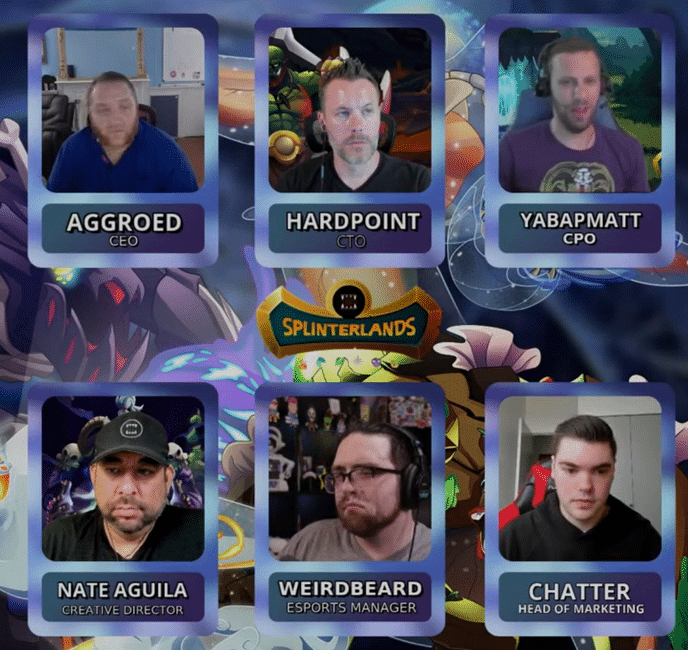
Since that April 2018 meeting, the game has been played tens of millions of times, the cards are collectively worth millions of dollars, and players are actively trading with each other on the marketplace. The game has truly become one of the most popular crypto games in the industry.
The team behind the game has also expanded manyfold since then, with over 62 known employees and many collaborators. Currently, Dr Reich handles fundraising, sales, marketing, financials, game development, and community development of Splinterlands while Matthew is the CTO of the project.
The team also boasts of high-profile advisors with a rich experience in the field. The project’s senior advisor Aly Madhavji is a consultant with the United Nations for almost 4 years. He primarily aids the UN with FinTech & Blockchain solutions to help alleviate poverty, support business ecosystems, and improve society at large. Another advisor, Edward Sullivan is currently the CEO and Founder of Trust Exchange.
How to Play Splinterlands
Game Setup
To get started with playing Splinterlands, the first thing you need to do is create an account by signing up.
You can do so by going to splinterlands.com or by downloading the app and signing up with your smartphone. You can play Splinterlands on both the browser and mobile device. For mobile, Splinterlands is available on both Android and iOS.
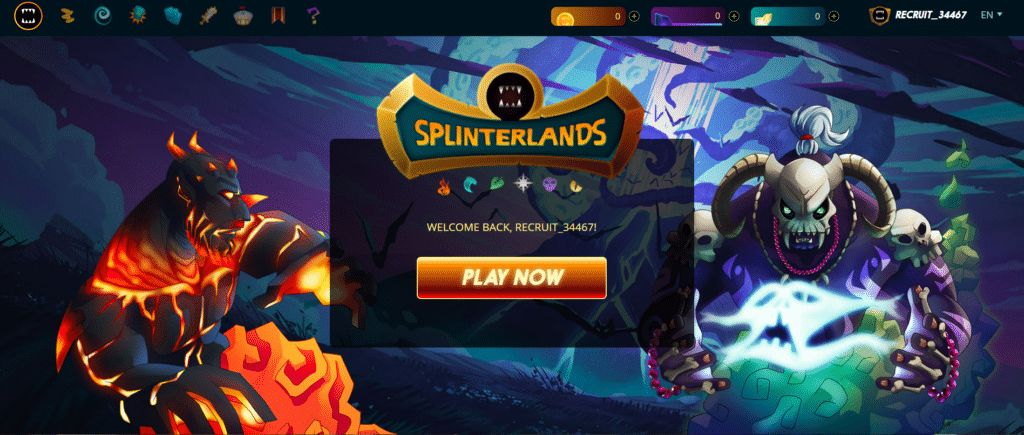
After successfully registering, the game will provide you with a basic set of starter cards that are not NFTs. You can use this deck to take the optional tutorial and learn the different mechanics of the game while playing a few practice matches.
Summoner’s Spellbook
Now that you’ve played a few practice matches, you probably want to try climbing up the ranks with your free non-NFT starter deck. Well, I hate to break it to you, but you can’t.
Well, technically, you can try and maybe win a few matches. But it is virtually impossible to rank up without buying or renting a few cards. And, to be able to buy or rent cards, you need to purchase the Summoner’s Spellbook from the game.
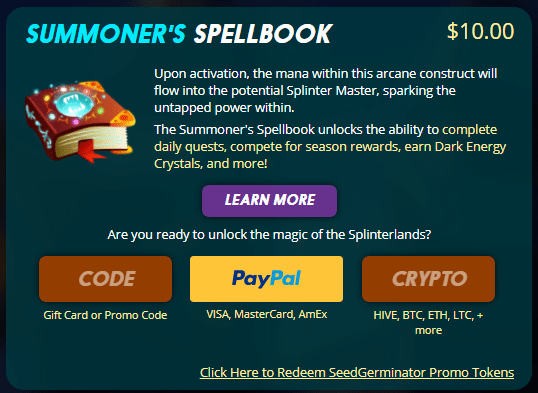
Don’t worry, it’s not an actual spellbook but rather a sort of membership pass. Purchasing the spellbook primarily creates an account on the Hive blockchain for you. This way all the NFTs and tokens you accumulate can be safely stored in the wallet.
The Summoner’s Spellbook is a one-time purchase and costs $10. Payment can be made through two channels- either crypto or PayPal. Once you’ve made this purchase, all of the features of the game such as purchasing cards and using some in-game features will be made available. Starting from May 31st 2022, purchases of Summoners’ Spellbook will include 3000 Credits which can be used in the in-game shop or to purchase or rent cards from the market.
Players can now
- Purchase packs, cards and land
- Earn DEC or Credits for battling
- Earn Daily Quest and Season rewards
- Join tournaments
- Transact on the HIVE blockchain
- Transfer assets in and out of the game
Game Components
Now that we’ve understood how to setup the game, let us take a brief overview into all the components of the game before delving into the gameplay.
Cards
The cards are the primary component of the game. They can be acquired by purchasing booster packs or by receiving rewards in loot chests at the end of the season. They are also actively traded on Splinterlands own marketplace as well as secondary markets like peakmonsters.com (Hive chain) and AtomicHub (Wax blockchain).
Types & Splinters
Cards can be broadly categorised into three types: summoners, monsters and ‘item & spell’ cards. Currently, Summoners and Monsters are the primary cards used to play the game.
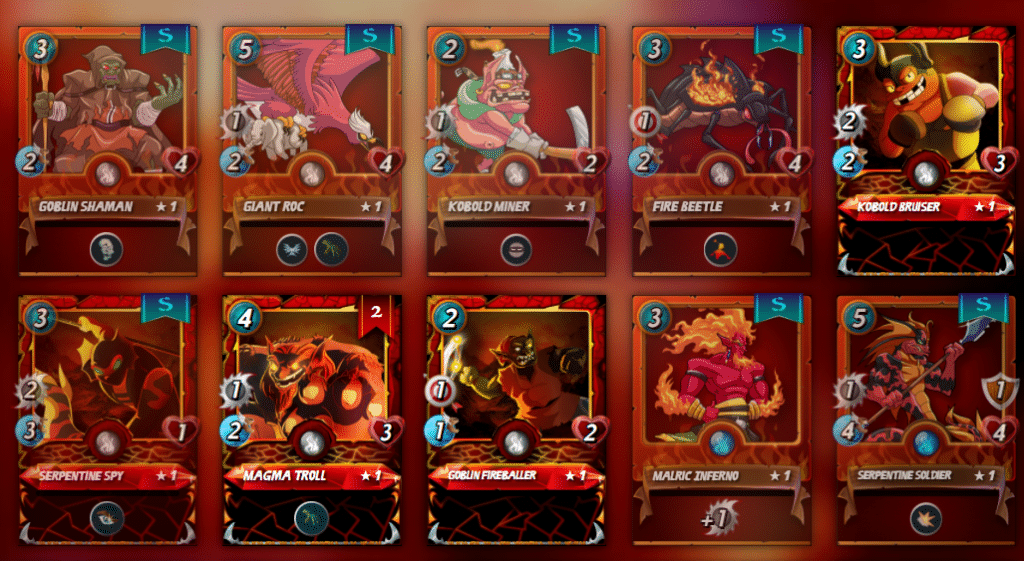
Each Summoner and monster corresponds to one of seven ‘splinters’. Splinters are like elemental factions to which each card belongs. The splinters currently in existence are fire, water, earth, life, death, dragon, and neutral splinters.
During the game when a ‘Summoner’ is chosen, the player will only be able to make a deck with monsters that belong to the same splinter as the summoner. The only two exceptions to this rule are monsters belonging to the neutral splinter and summoners belonging to the dragon splinter. Neutral monsters can be included in any splinter deck. Dragon summoners allow you to use dragon monsters as well as monsters from one other splinter. This could be dragon+fire, or dragon+water, or dragon+any of the other splinters available.
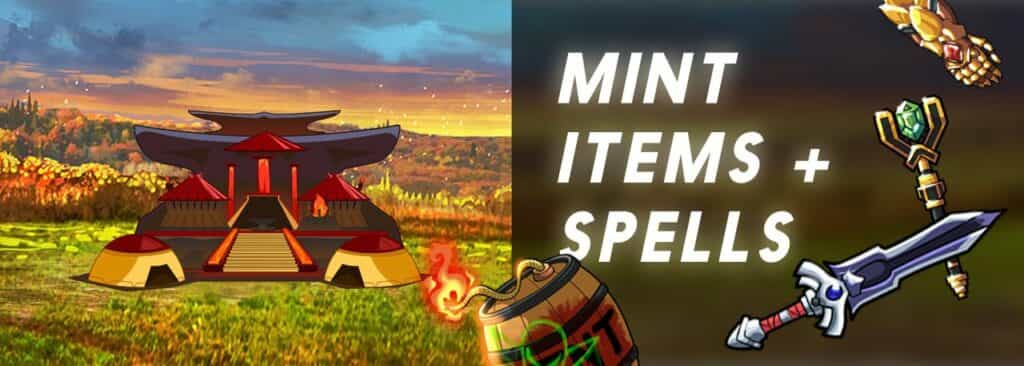
Item and Spell cards are an upcoming feature that will be released with the lands of the Splinterlands game. These cards will not be sold by Splinterlands but instead mined from the land parcels and sold in the secondary markets. Item and Spell cards allow the player to actively influence the outcome of the match by letting the player use the card during the match. This disrupts the current auto battler format of Splinterlands.
Stats
There are five primary stats on a card-
- Attack – This stat indicates the amount of damage dealt by the card to the opponent.
- Health- This stat indicates the total damage points the card can handle before it is eliminated.
- Speed – This stat indicates the movement speed of the card and determines the order in which the card will attack or react during a round.
- Armour – This stat indicates the amount of battle damage a card can endure before losing its health points.
- Mana- This stat indicates the mana energy required to play the card.
Card Rarities
The cards themselves have two different types of rarities.
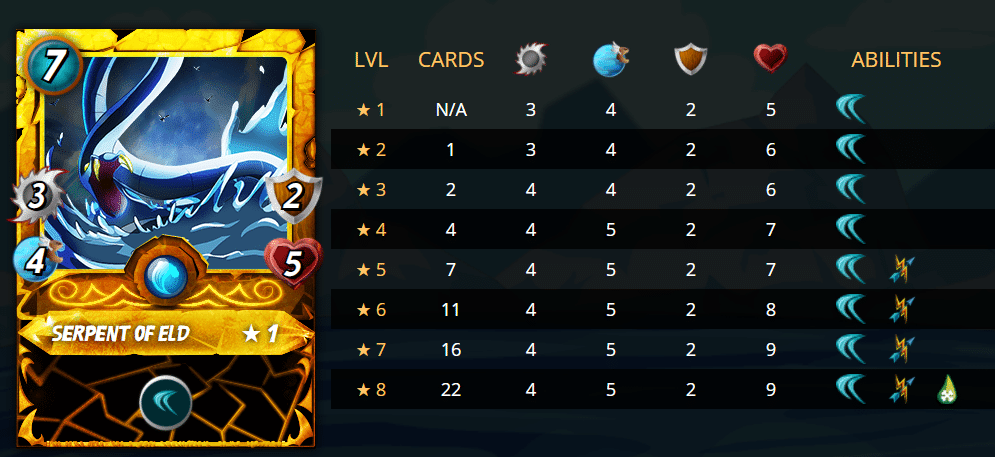
Foil rarity- Both summoners and monsters can be regular, or of a gold foil variation. Gold foils are rarer than regular foils, and provide more Collection Power than a regular card. Each gold card also gives a 10% bonus when played in a winning battle.
Supply rarity- This rarity refers to the number of copies of a particular card in circulation and is split into common, rare, epic and legendary based on the opening percentage in booster packs or Loot chests. The higher the rarity, the more copies of the card are required to level the card up.
Abilities & Levelling up
Cards can be levelled up by combining multiple copies of the same card. Higher-level cards get increased statistics and, often, additional abilities. Cards can use these abilities to trigger a special effect or increase the stats of your own cards or decrease the stats of your opponent’s cards. A complete list of all the abilities available in the game can be found on the official Splinterlands website.
Marketplace
Splinterlands has an built-in marketplace as well as multiple secondary marketplaces such as PeakMonsters, MonsterMarket and CardAuctionz.
Buying, Selling and Bidding
Players can buy, sell and bid on the built-in marketplace. The marketplace offers easy filtering options so that players can sort through and find the card most suited to their needs. Each card listed on the marketplace has additional information such as the number of cards in circulation as well as the lowest price for that particular card in the market.
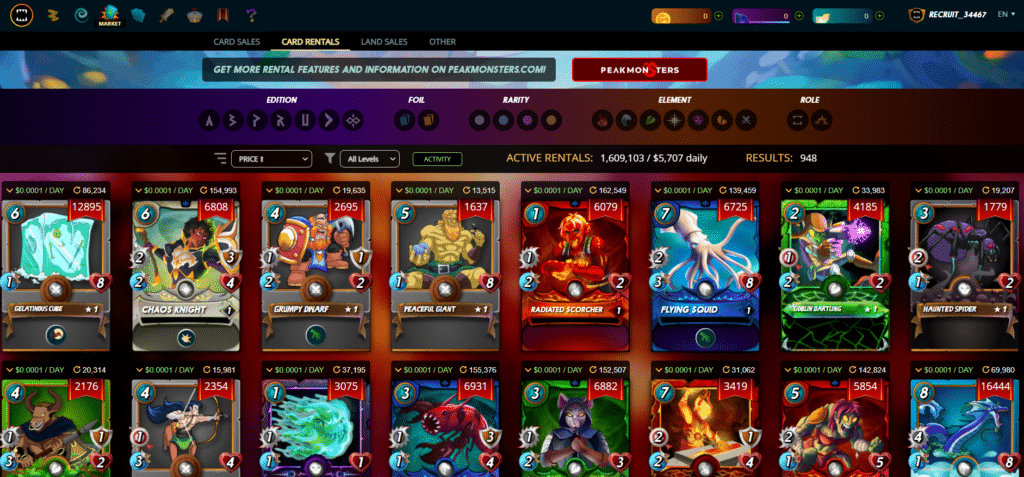
Rentals
Players can also rent cards rather than buy them via the built-in marketplace. This is possible due to Hive blockchain's delegation feature that allows assets to be delegated to other accounts on the blockchain. The rental cards, however, have limitations. For example, they can't be combined, sold, or transferred, but the renter can utilise them in play, and they add to the player's total CP.
Land
Land in Splinterlands offers owners the ability to mint exclusive items and spell cards. As explained before, these items and spell cards will never be sold by the team but instead produced and traded completely between players.
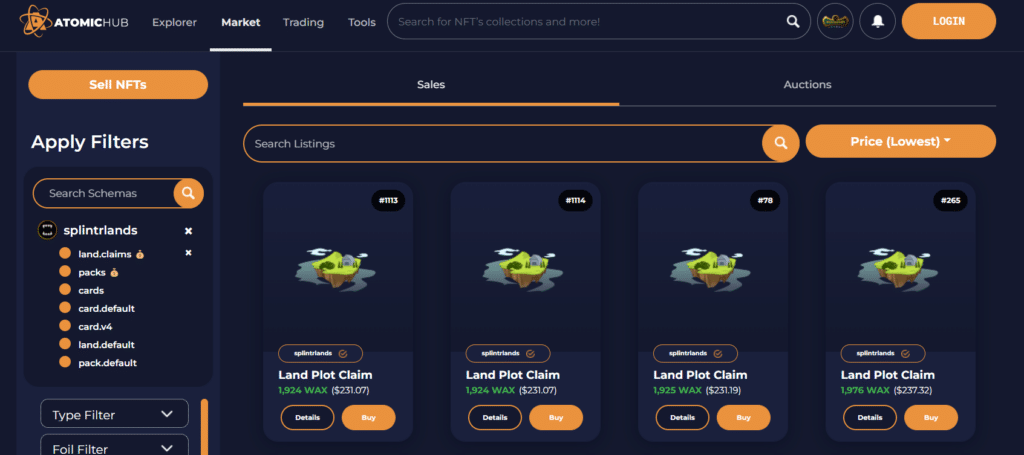
The land sales happened in batches over 2020 and 2021 and have completely sold out. Soon after the primary sales, the game recorded its highest sale on the secondary market for over $700,000.
Currently, you can purchase land on secondary markets, with the cheapest one selling for around $250 at AtomicHub on the Wax blockchain.
Guilds
Splinterlands also has a guild system where players can band together and use their combined resources to earn additional value, including DEC bonuses and discounts on various Splinterlands purchases.
Guilds can be extremely useful to maximise the rewards obtained from the game. Guild members can commit DEC and grow the guild to unlock various benefits for members. In future updates, we can also expect to see 'brawls' between guilds. Brawls are a guild vs guild battle format where members belonging to two different guilds are pitted against each other to earn merits and crowns which are used to upgrade buildings and buy gladiator packs.
Splinterlands Gameplay
Now that we’ve touched upon all the components that make up Splinterlands, let’s look at the gameplay, shall we?
There are three main battle modes in the game:
- Practice Mode: Players can battle other players without affecting their ranking in the season
- Ranked Mode: Battles played in the ‘Ranked Mode’ affect the player’s ranking in the season by crediting ‘rating points’ for every win and reducing ‘rating points’ for every loss. Based on a player’s ranking at the end of the season or tournament, he might be eligible for rewards.
- Challenge Mode: Challenge mode allows two players to participate in a friendly private battle. Battles played in challenge mode do not affect a player’s ranking.
To earn rewards, players need to competitively battle each other and win in the game's ranked mode. Once players have chosen to battle, the game matches the player with another player of the same or similar skill level. This ensures that matchups are fair and equal.
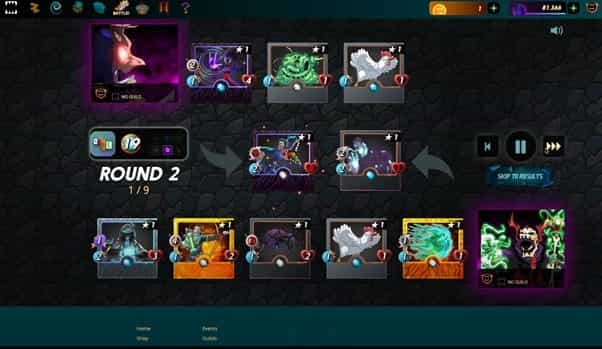
Dueling Screen Where Players Watch the Battle Play out
Once the matchup is decided, the screen prompts both players to create a deck of 7 cards comprising one summoner and six monster cards arranged in the sequence of play. Again, strategy and card collecting play a very important role here, as battles in Splinterlands implement an element of randomisation by changing the rules for every battle.
In lower leagues, the change in rules typically involves changing the amount of mana provided to players in every battle. Every card has a mana cost that must be paid to place it within a deck. The changing mana limit ensures that players do not repeat or spam the same decks or strategies for every match in the game.
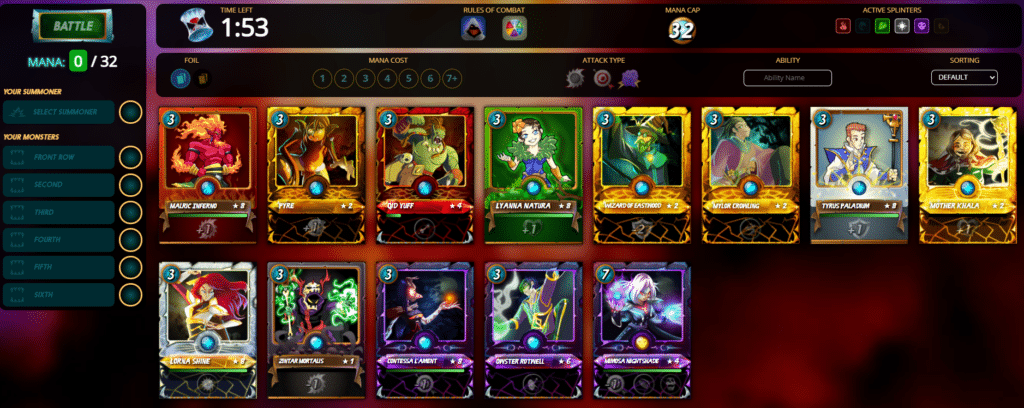
In higher leagues, the change in rules typically involves a mana restriction and disallowing specific summoners, cards or abilities. This added complexity provides a better challenge to the more skilled players of the game.
This ensures that the gameplay remains interesting and stimulating while preventing a 'meta' saturation during the season. For the non-gamers, "meta" in gaming terminology generally refers to the most powerful strategy or card combination currently trending within the TCG game.
Players with a broader collection of cards would be able to navigate battles better despite the mana limit or other restrictions in the game. In addition, having a wider variety of cards at hand gives the player more choices in creating a deck, underlining the importance of 'card collecting' within the game.
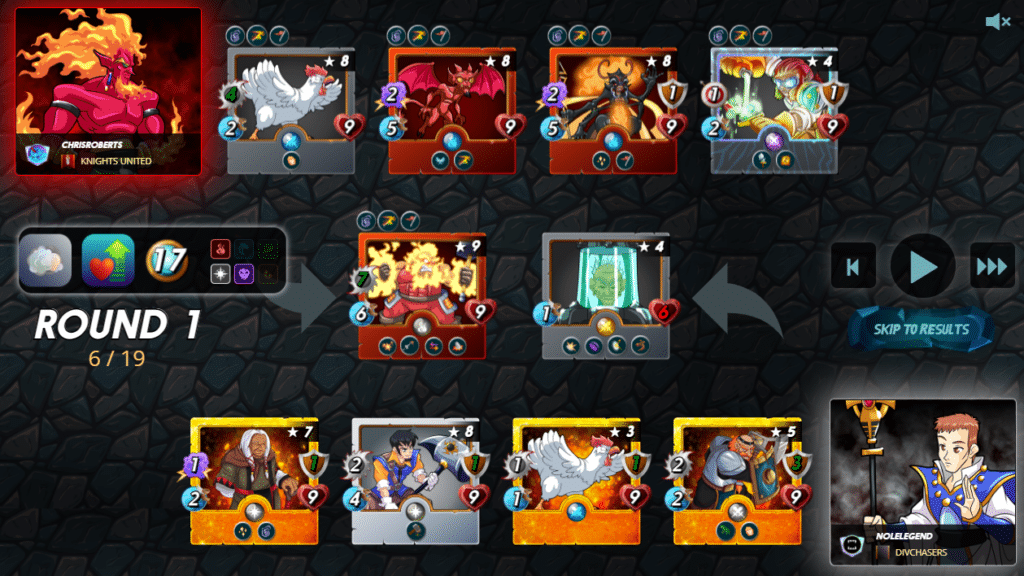
However, just having a wide variety of cards is not enough. Players also need to be strategic due to Splinterlands’ auto-battler format. This format does not allow players to actively influence the direction of the battle once the deck is made and the battle has begun. Instead, the order of play in which the cards were arranged in the deck and the distribution of stats play a key role, underlining the importance of strategy.
Once the decks have been made and confirmed by both players, the battle results are immediately uploaded to the blockchain and players are displayed a live replay of the battle. Though you can skip the replay, I highly recommend watching it as it allows you to learn different strategies and combinations used by your opponents.
Competitive Gaming & Splinterlands Play-to-earn Potential
Leagues
Splinterlands follows a league-based system for its ranked battles, with six leagues that players can be placed in according to their rating points and Collection Power (CP). As players progress through the Leagues, the rewards increase, but so does the complexity of strategy and the intensity of competition.
When a player qualifies for the next League, they have the option to advance or stay in the current League. If they remain in the same League, gaining points will be more difficult because nearly everyone they encounter will have lower League scores than them, but they will be able to compete for the top spot in their current League. The top players on each League's leaderboard are awarded booster packs as prizes, apart from their rewards at the end of each season.
The six leagues are:

- Novice- This league is usually occupied by fresh players who have just started the game. Players cannot earn rewards in the Novice league.
- Bronze- This league is split into three tiers, from Bronze 3 (lowest tier) to Bronze 1 (highest tier). Players begin earning rewards from Bronze 2 onwards. The CP power required for the Bronze league ranges from 1000 to 5000 CP.

- Silver- This league is split into three tiers, from Silver 3 to Silver 1. The CP power required for the Silver league ranges from 15000 to 70000 CP.
- Gold- The competition difficulty really picks up from the gold league onwards. This league is split into three tiers, from Gold 3 to Gold 1. The CP required for the Gold league ranges from 1,00,000 to 2,00,000 CP.

- Diamond- The Diamond League separates the pros from the skilled players. Here, all types of cards can be played at their highest level, making it impossible to compete with cards of lower levels. This league is also split into three tiers, from Diamond 3 to Diamond 1. The CP required for the Diamond league ranges from 2,50,000 to 4,00,000 CP.
- Champion- This is the final league of the game with only the best of the best making it into this league. The Champion league is also split into three tiers from Champion 3 to Champion 1. The CP required for all the tiers of the Champion league is above 5,00,000 CP.
Seasons
The seasons in Splinterlands follow a similar pattern in other online TCG games. Splinterlands seasons range between 12 to 16 days, with the end time of each season being rotated so that players from different regions of the world get to experience that last-minute grind to the leaderboard.
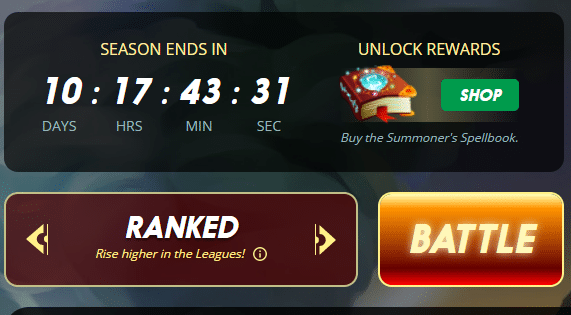
At the end of each season, players are awarded the corresponding Loot Chests to their final league ranking. After the loot chests are given out, the booster packs are distributed to the top 50 leaders in each league. However, be mindful that players need to participate in at least one match to be eligible for season rewards.
After all the rewards are distributed, the timer is reset for the next season, and the player is dropped by one league.
Ranking System
For players to progress along the leagues, they need to be mindful of two key rating metrics. The first is the player's Collection Power (CP), and the second is the player's rating points.
Collection Power
Collection power is the combined Dark Energy Crystals (DEC - the main in-game currency of the game) burn value of each NFT card owned or leased to you that is in your possession. This excludes the non-NFT starter cards that every player receives when creating an account in the game.
So what does that mean? When cards in Splinterlands are burned, they produce a certain amount of DEC received by the player burning the card. The total number of DEC you would receive if you were to burn all the cards in your possession would be your Collection Power.
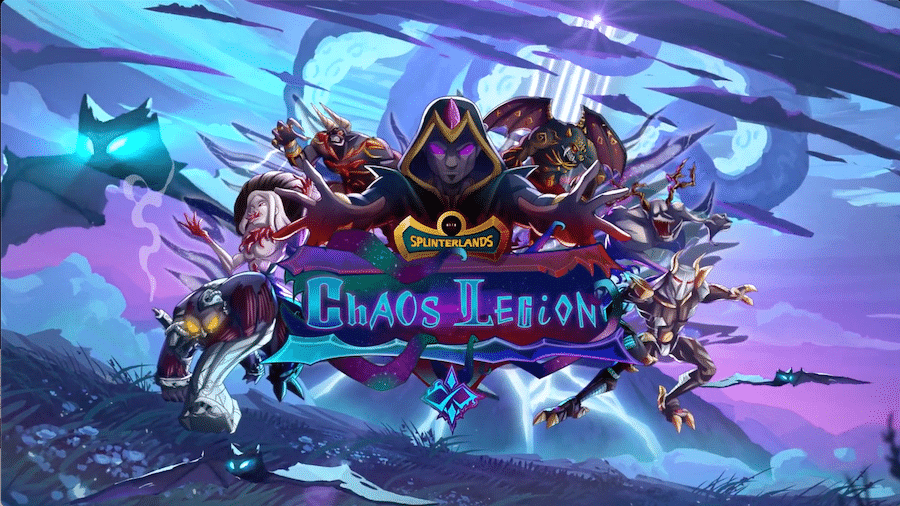
Each League has a threshold CP that players need to cross to rank up. This means that you can't rank up unless you own or rent a good number of cards. Players can acquire cards in two ways- either by purchasing individual cards or booster packs in the primary or secondary markets or by renting cards from other players in the markets.
Player Ratings
The second metric for ranking up is the actual player rating, which players gain through winning games. Each League and its tiers demand a steady increase of 300 rating points per tier to move on to the next one. The only exception to this rule is the Champion league which requires an increase of 500 rating points to move to the next tier. However, gaining rating points isn't easy; every match you lose reduces your rating points. So ideally, players must have at least a consistent 50% win rate to progress smoothly in the leagues.
Rewards Calculation System
The Splinterlands team has announced a new rewards system that will go into effect from 31st May 2022. The new rewards system will significantly bump up the number of rewards issued to players by incentivising players to play the game and rack up more wins.
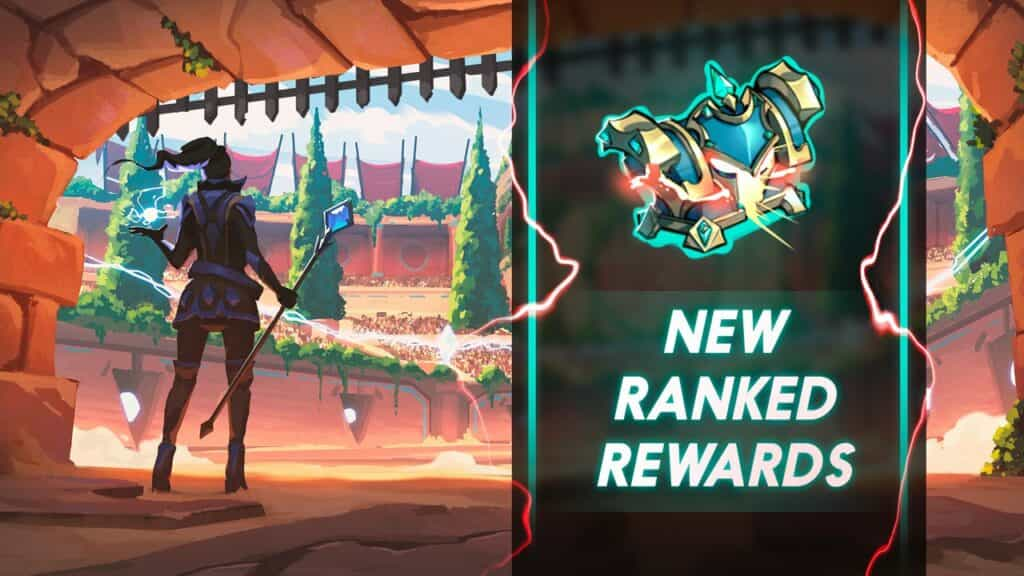
Under the new model, season rewards will be based on the number of reward shares earned from all ranked battle wins during the season. Earlier, only the DEC rewards were influenced by the rewards share system, but now the system will extend to seasonal and daily rewards. Additionally, this means that the bonuses from gold foils and guilds can now be applied to seasonal and daily rewards.
There will also be different loot chests, one corresponding to each league (Bronze - Champion), with higher league chests containing significantly more / higher valued rewards. The type of loot chests earned from daily and season rewards will be based on the highest league achieved during the previous season.
The new reward share system will also penalize players using the starter cards by negating some reward shares for every starter card in your deck. This is to encourage players to use decks with NFT cards, thereby decreasing the value of starter cards and increasing the value of NFT cards.
If you’re looking for a more comprehensive analysis of the earnings vs expenditure calculations of the game, I highly recommend giving Balthazar’s report a read.
Splinterlands Tokenomics
Splinterlands has a three token economy comprising of
- Dark Energy Crystals (DEC),
- Splinterlands Credits (Credits), and
- Splintershards (SPS).
Each of these tokens has its own utility, which plays a vital role in maintaining the game's economy.
Let us have a look at each of them in better detail.
Dark Energy Crystals (DEC)
Dark Energy Crystals (DEC) is the official reward token of Splinterlands. It is earned through winning matches in the game. The token is always pegged to maintain the value of 1000 DEC = $1. As a result, the official daily reward pool, which is fixed at 1 million DEC, fluctuates based on the price of DEC. For instance, when the price of 1000 DEC falls below $1, the reward pool size falls below 1 million DEC, and vice versa.
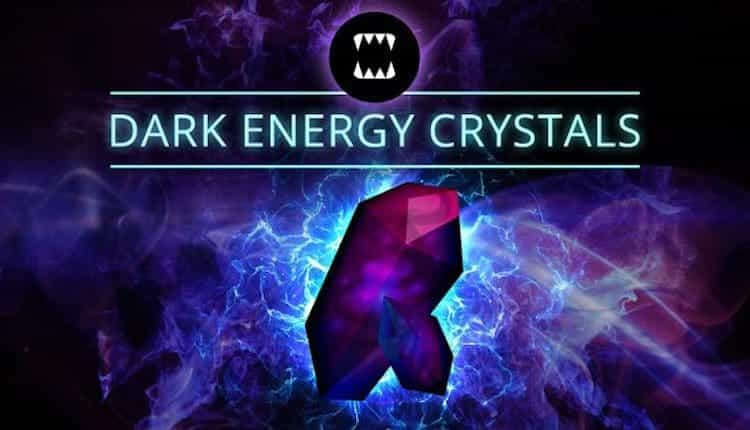
This daily reward pool is split and earned by players at varying rates based on several factors, such as the player's current league, the number of players playing on the day, the DEC capture rate, and other active bonuses.
To maintain the utility and value of DEC, the token is burnt through various use cases. The most notable, in my opinion, is being the official currency to purchase miniset packs in the game. Each pack in the shop can be purchased with 1000 DEC per dollar, irrespective of whether DEC is trading at $1. If 1000 DEC is worth less than $1, players can purchase the packs at a discount driving up the demand for the token to buy more packs.
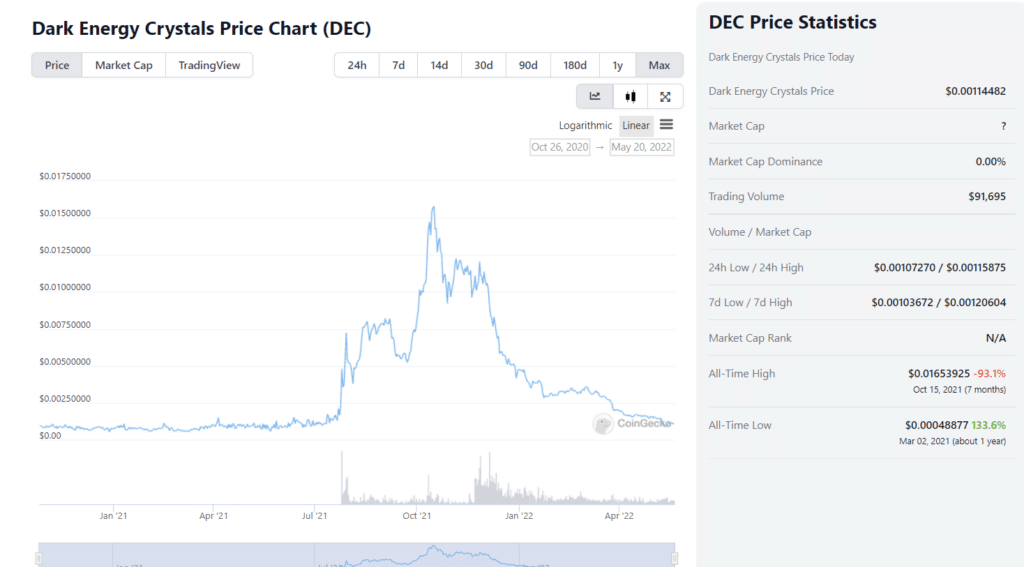
DEC currently trades at $0.00114 per token, placing it slightly above the $1 peg per 1000 DEC. The token hit an all-time high of $0.016 in October 2021 and an all-time low of 0.00048877 in March 2021. DEC can be bought at Uniswap and TribalDEX.
Splinterland Credits
Credits are similar to DEC; both tokens are pegged to 1000 = $1. However, unlike DEC, Credits are not tradeable on secondary markets. They can only be used to redeem for packs or other items in the Splinterlands marketplace. Credits act as a closed-loop internal currency of the game.
Splinterlands has balanced its referral/affiliate system by crediting users with ‘Credits’ as a part of its commission payout. This prevents mass dumping or gaming of the affiliate system by malicious actors. Each credit earned goes towards purchasing packs or renting cards within the marketplace, promoting a healthy market economy.
Players can purchase credits with PayPal or any accepted cryptocurrency.
Splintershards (SPS)
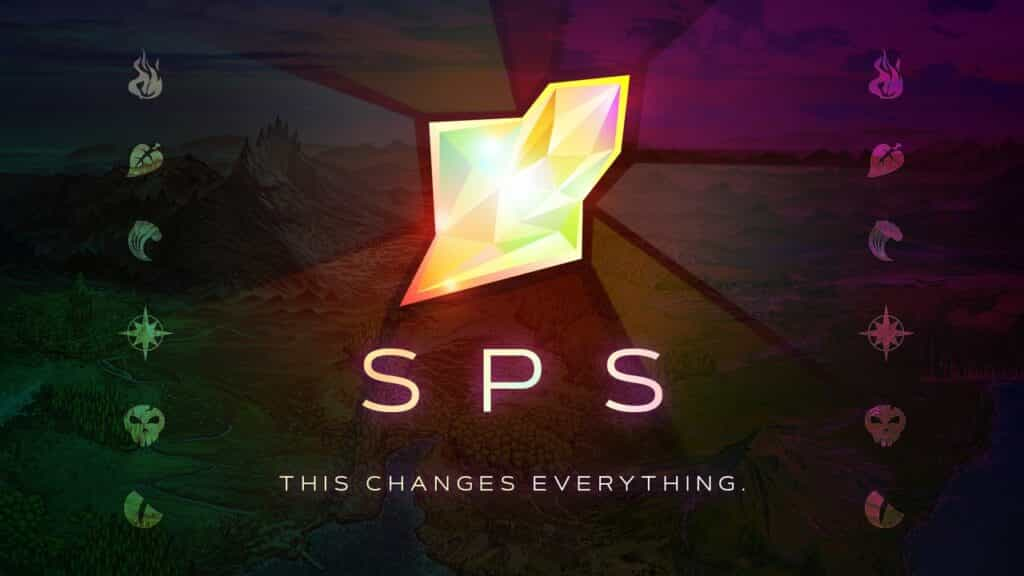
Utility
Splintershards or SPS is a BEP-20 governance token of Splinterlands. The SPS token holders can stake their SPS to vote on the proposal put forward by the DAO. Each staked SPS token will be worth one vote, meaning the more SPS tokens a person holds, the greater influence they will have over the voting results. Additionally, anyone can submit a governance proposal for voting as long as they pay a price in SPS tokens that will be burned.
Token Allocation
SPS has a total supply of 3 billion tokens with a steady release schedule that lasts for approximately 65 months from when the token first launched. The token supply was allocated in the following manner:
- Airdrop- Nearly 33% of the token supply was allocated towards airdrops for players who own cards or assets that count towards collection power. The amount of SPS you receive in the airdrop is correlated to the amount of collection power you have. Collection power that you have rented or acquired through delegation will not count towards your airdrop.
- Staking and Rewards Pool- Around 60% of the token supply is dedicated to players actively participating in the seasons and staking their SPS tokens. These tokens will be released on a fixed schedule over the 65 months and go into separate pools for the various areas to be rewarded.
- DAO Treasury- Around 10% of the total supply is allotted to a foundation that will be controlled exclusively by the DAO. The first 50,000,000 foundation tokens will be distributed on day one. The remaining tokens will be distributed in even increments over the next 64 months. This means that holders of SPS tokens will be able to submit proposals and vote on how and whether those funds should be used.
- Private Sale- Around 6% of the total supply was sold in private sales. Tokens purchased as part of the private sale will be subject to a vesting period, with 10% of the tokens vesting and becoming liquid every month for a total of 10 months. All proceeds from the sale will go towards the development, promotion, and ongoing maintenance of the SPS token and ecosystem.
- Team- Around 9% of the total token supply will be reserved for the Splinterlands team. Similar to the DAO treasury allocation, the first 50,000,000 foundation tokens will be distributed on day one. The remaining tokens will be distributed in even increments over the next 64 months. Funds from this allocation will be used to support the game's development and incentivise and retain developers of the game.
- Partners and Advisors- Around 1% of the token supply will be reserved for partners and advisors to the project who will work with the SPS token team and assist and/or provide advice on all areas of the project and help to market promote the project. These tokens will be unlocked in 12 monthly increments starting one year from the launch of the SPS token.
Validator Nodes
Splinterlands is also launching validator nodes to allow the community to validate transactions within the game and earn SPS for doing so. These validator nodes will be used to secure the DAO governance on the Hive blockchain. Validator nodes will follow a delegated proof-of-stake (DPoS) consensus model which will allow even people without a node to delegate their SPS to a validator and take a share in the block rewards. The SPS validator software will be 100% open source and available for anyone to download and run without any costs or restrictions.
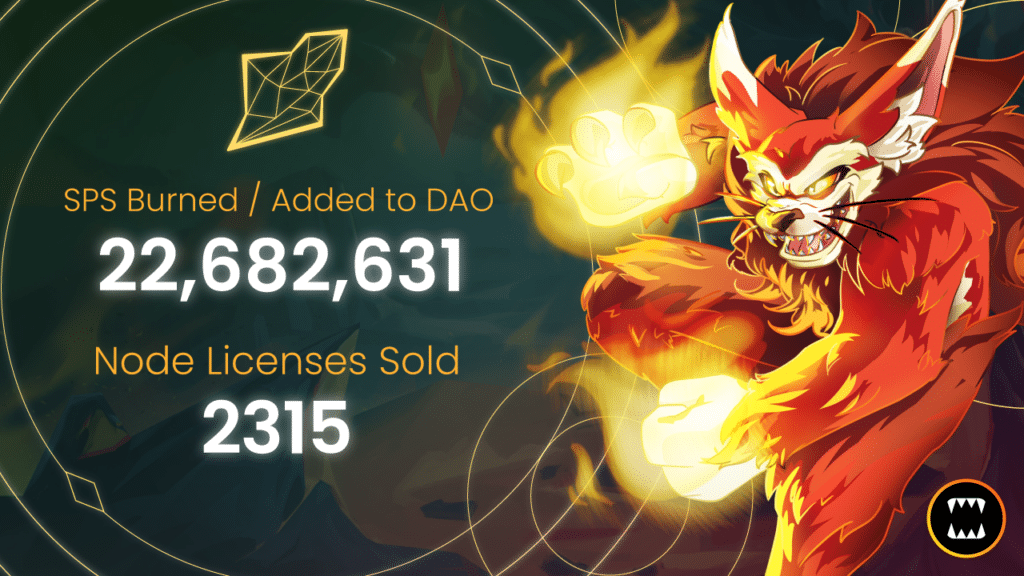
In order to further incentivize a larger participation in the validation process and further decentralize the application, the Splinterlands team has introduced the concept of 'Validator Licenses'. Holders of Licenses are guaranteed a share of the monthly SPS rewards as long as they run an active node. This means that instead of the usual 100-150 validators winning block rewards in DPoS chains, a far greater number of validators will share SPS rewards in Splinterlands validation process. Node Operators can also hold multiple validator licenses on a single node and enjoy additional rewards from all of them.
In terms of Rewards, there are 3,750,000 SPS tokens per month allocated to a reward pool for SPS Validator Node operators. 10% will be devoted to block validation rewards (375,000), and the remaining 3,375,000 SPS / month will be split equally between all of the license holders that are actively running the node software.
Currently, the validator node licenses are up for sale on the official Splinterlands website. The licenses seem to be selling out quite well as the pre-sale sold out all 2000 licenses within the first 10 minutes. At the time of writing, the sale is in tranche 1 with over 315 licenses sold.
Price History
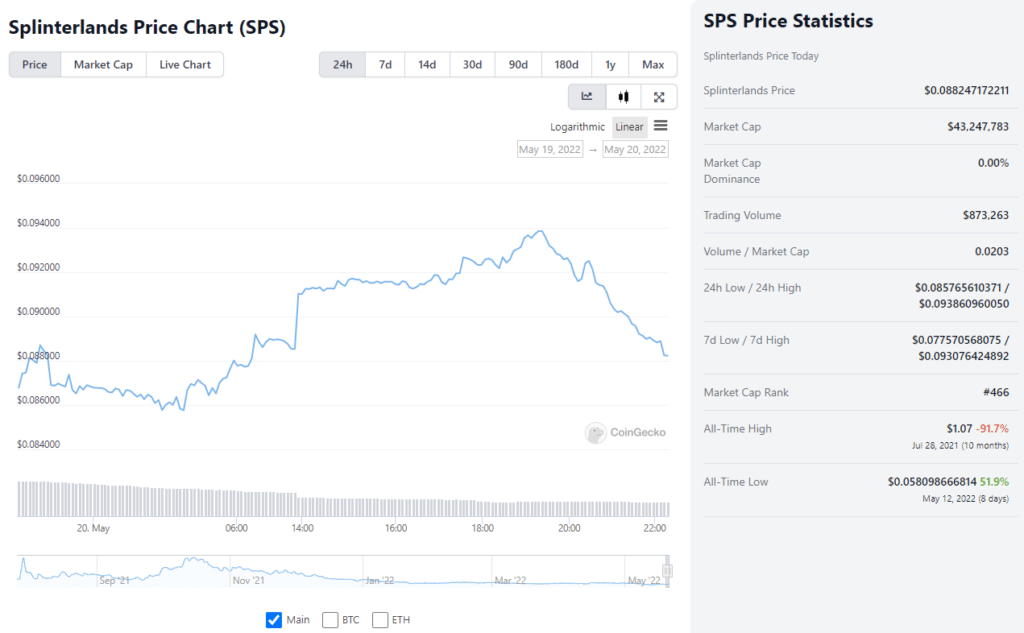
The SPS token is currently trading at $0.08 with an all time high of $1.07 on July of 2021 and an all-time low of $0.05 in May of 2022. The tokens current price is close to its all time lows.
Where to buy and stake SPS?
SPS can be bought at MEXC Global, Crypto.com, PancakeSwap and Sushiswap.
SPS can be staked on the official Splinterlands website. However, once staked, SPS tokens are subject to an unstaking period of 4 weeks. The tokens will be released into the liquid supply at a rate of 1/4 per week for 4 weeks. Players receive SPS rewards for staking SPS.
Splinterlands Roadmap
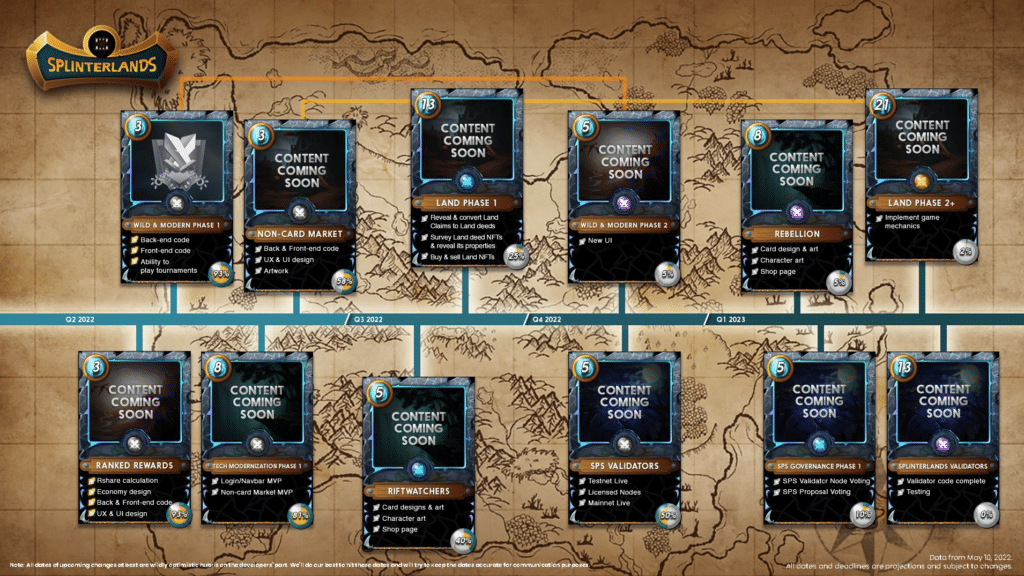
One of the more immediate features players can expect in Q2 of this year happens to be the modified version of the ranked mode. With the successful release and sale of the chaos packs, there are now far more sets of cards in the ecosystem that newer players might not be able to collect or compete with some of the older, rarer cards.
Splinterlands is launching the Modern and Wild ranked formats to deal with this. The modern format will be more friendly to newer players as it restricts the number of playable cards to the latest two sets- Chaos and Untamed. On the other hand, the wild format is more diverse and will allow players to use any card from any set or edition.
The launch of the SPS validator node is also another feature to look forward to, as players can now actively earn SPS and have a greater degree of control in the direction of the game. The introduction of lands and the release of items and spell cards is another feature that I find the most tempting. While I love the gameplay of Splinterlands, I wouldn’t mind a bit more control and strategy during the battle. The introduction of the item and spell cards makes this possible.
Closing thoughts
TCGs have always held a special place in my heart, and Splinterlands is currently one of the best in the blockchain gaming space. However, it did take me a couple of tries before getting the hang of the game. While the gameplay is fairly simple to understand, the competition gets quite intense in the higher leagues.
To compete at the top level, you require quite a number of cards to rank up and qualify. The game could burn a nice hole in your pocket if you are not deliberate in your card purchases or rentals.
The calculations for the play to earn mechanics can be a little confusing for new players, but thankfully the Splinterlands community has a good number of content creators who make the journey easier for fresh players. I highly recommend checking out Bulldog1205’s YouTube channel if you’re a new player looking for some helpful tips.
If you’ve managed to stick around till the end of this long article, it’s safe to say that Splinterlands has caught your interest. So what are you waiting for? Go give it a try!
Disclaimer: These are the writer’s opinions and should not be considered investment advice. Readers should do their own research.
Disclaimer: These are the writer’s opinions and should not be considered investment advice. Readers should do their own research.


